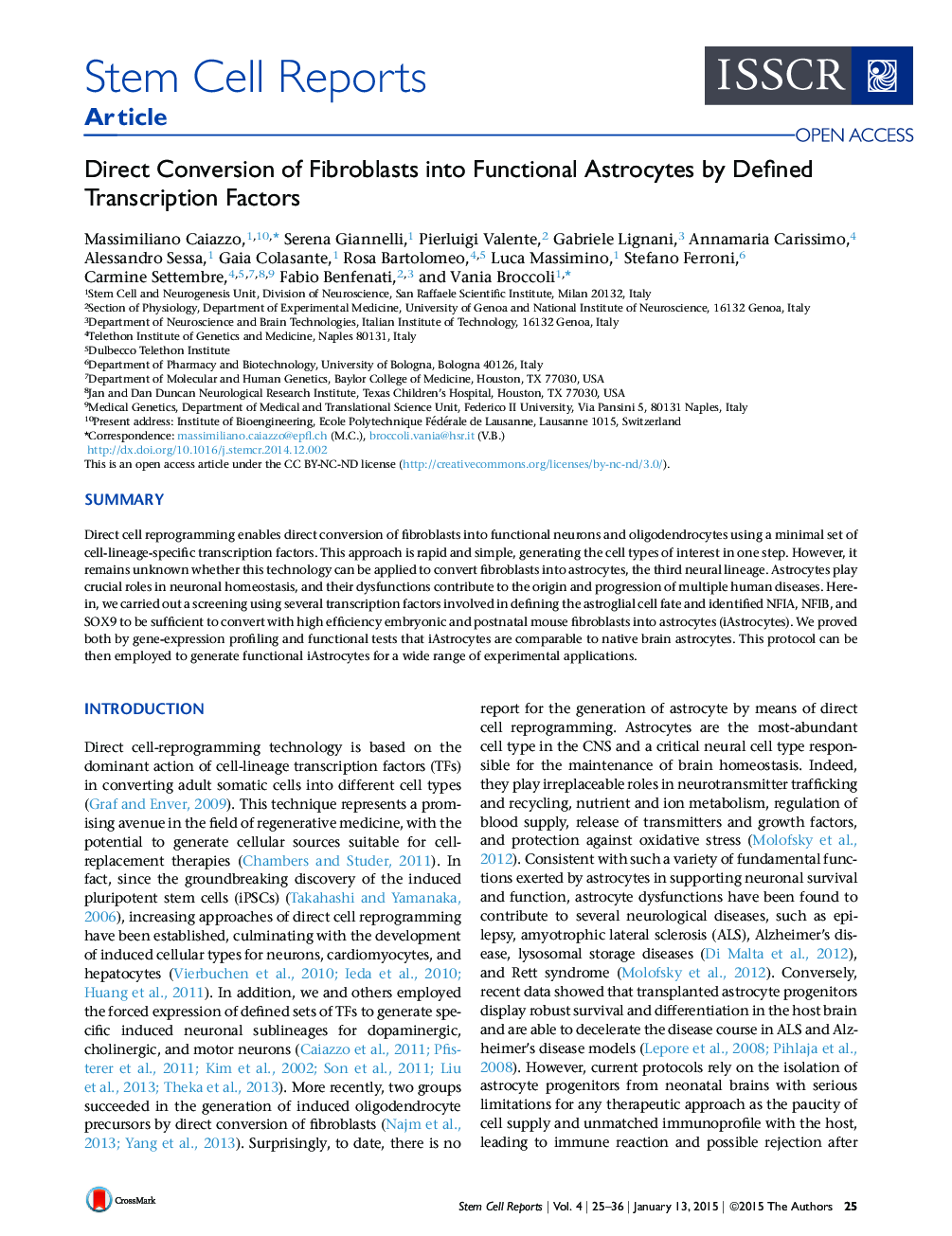| Article ID | Journal | Published Year | Pages | File Type |
|---|---|---|---|---|
| 2093643 | Stem Cell Reports | 2015 | 12 Pages |
•NFIA, NFIB, and SOX9 reprogram fibroblasts into induced astrocytes (iAstrocytes)•iAstrocytes reprogramming induces a global change in gene-expression profiling•iAstrocytes are functionally comparable to native astrocytes•NFIA, NFIB, and SOX9 induce an astrocytic phenotype in human fibroblasts
SummaryDirect cell reprogramming enables direct conversion of fibroblasts into functional neurons and oligodendrocytes using a minimal set of cell-lineage-specific transcription factors. This approach is rapid and simple, generating the cell types of interest in one step. However, it remains unknown whether this technology can be applied to convert fibroblasts into astrocytes, the third neural lineage. Astrocytes play crucial roles in neuronal homeostasis, and their dysfunctions contribute to the origin and progression of multiple human diseases. Herein, we carried out a screening using several transcription factors involved in defining the astroglial cell fate and identified NFIA, NFIB, and SOX9 to be sufficient to convert with high efficiency embryonic and postnatal mouse fibroblasts into astrocytes (iAstrocytes). We proved both by gene-expression profiling and functional tests that iAstrocytes are comparable to native brain astrocytes. This protocol can be then employed to generate functional iAstrocytes for a wide range of experimental applications.
Graphical AbstractFigure optionsDownload full-size imageDownload as PowerPoint slide
